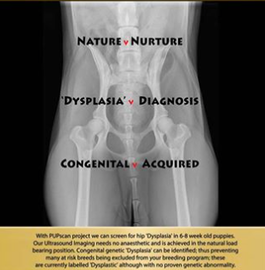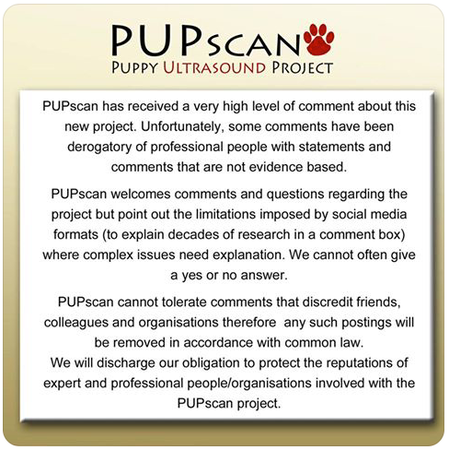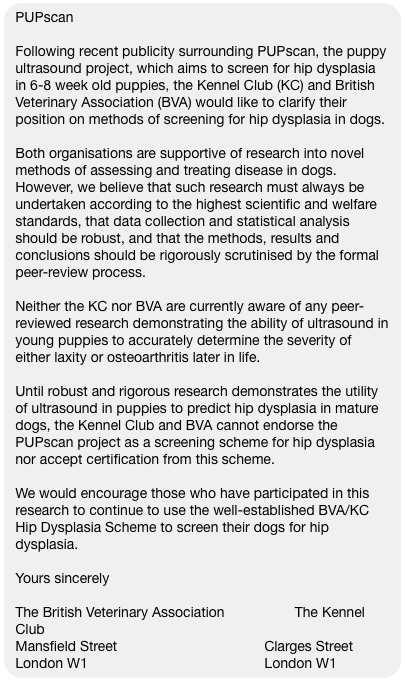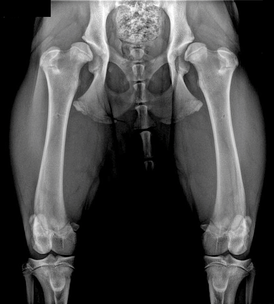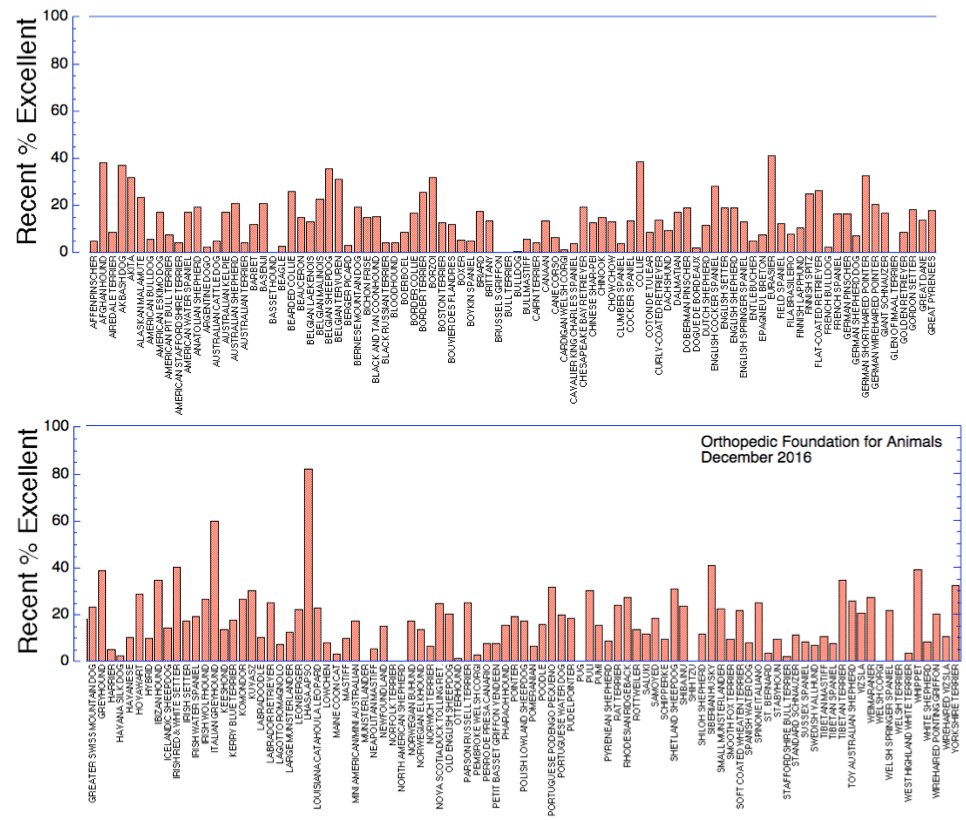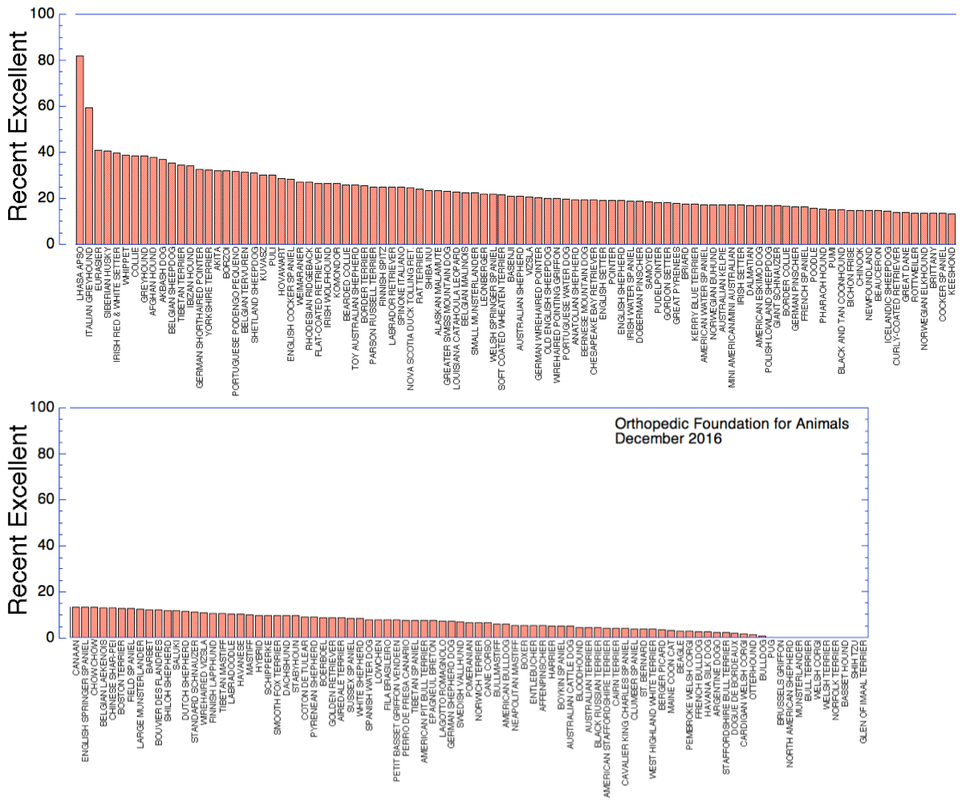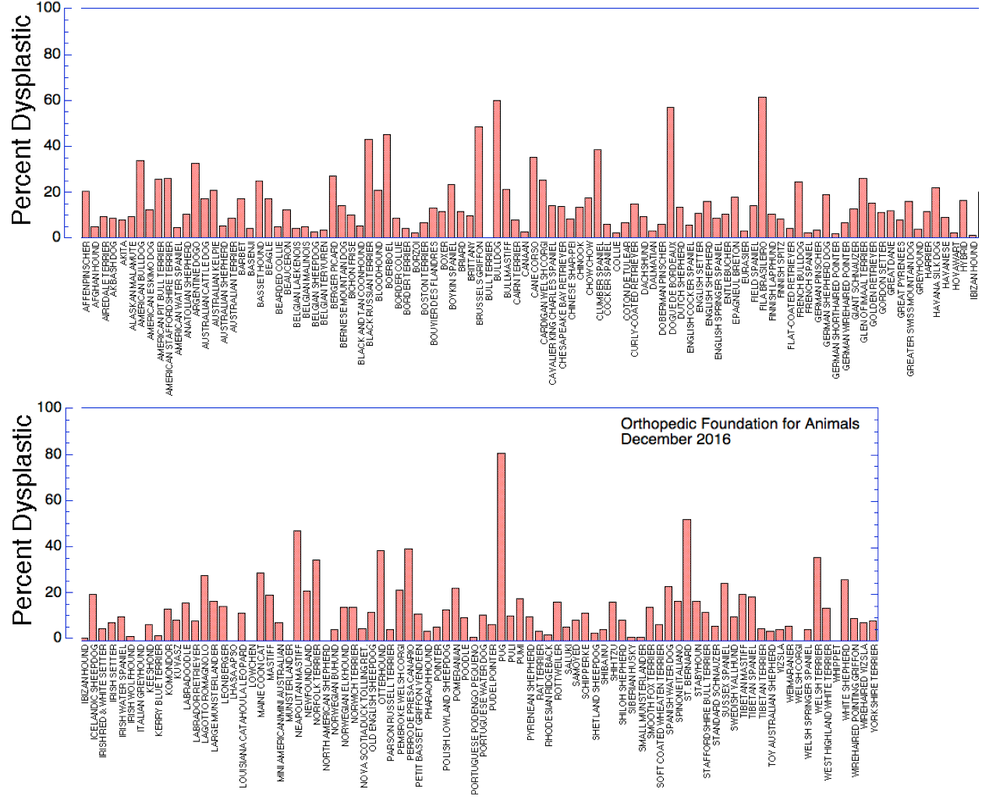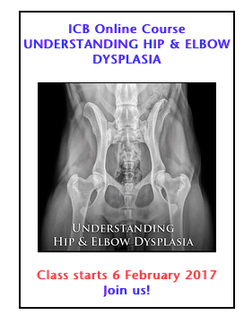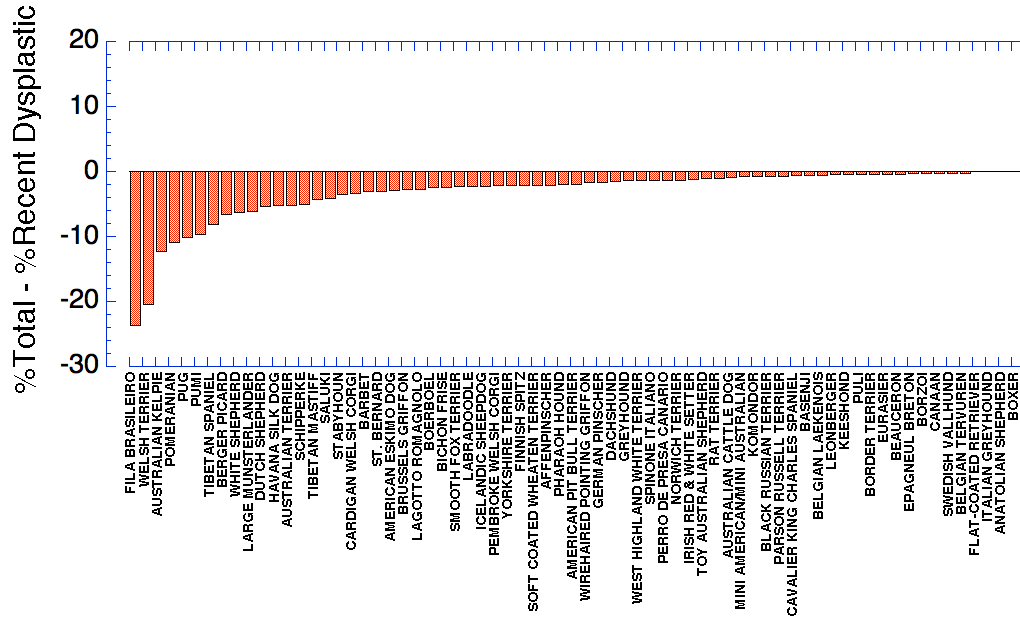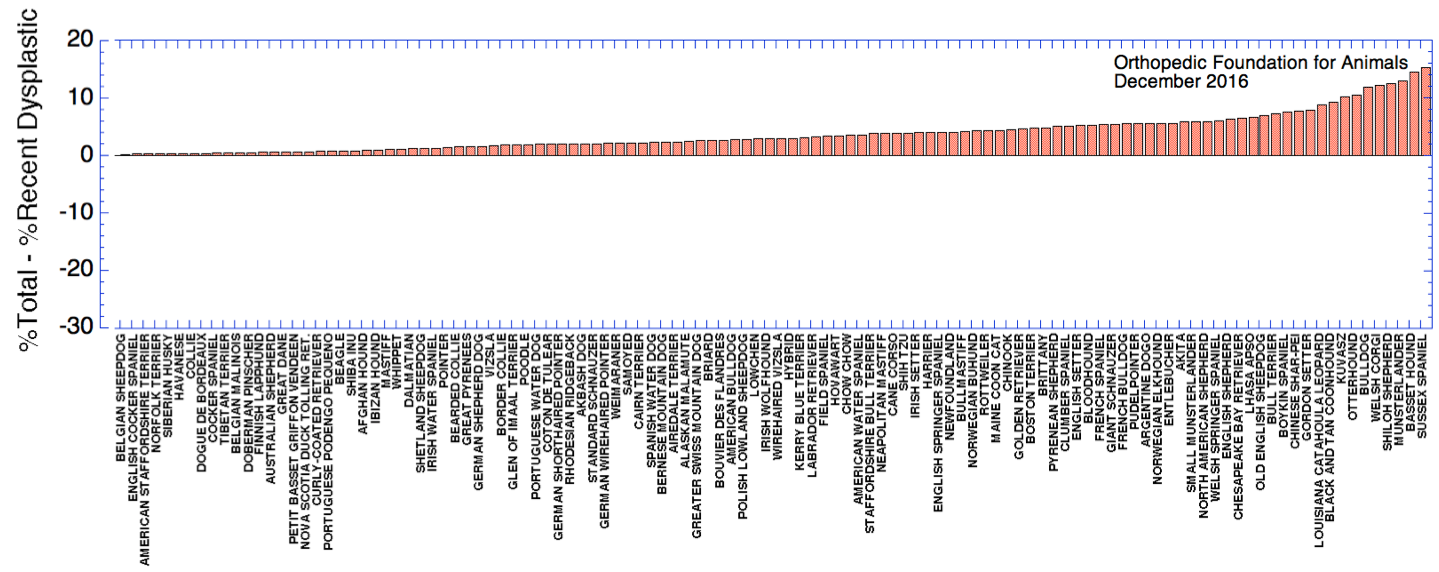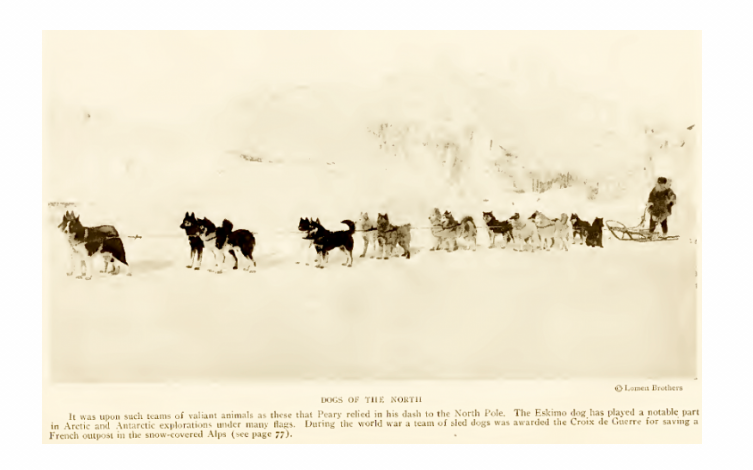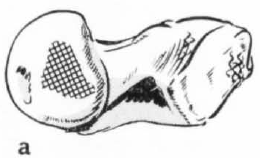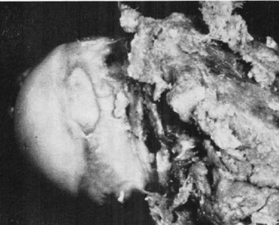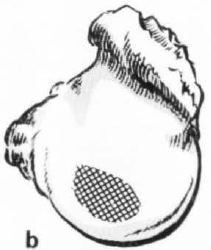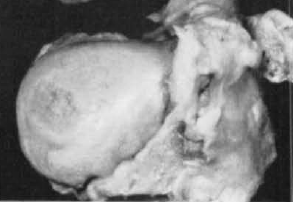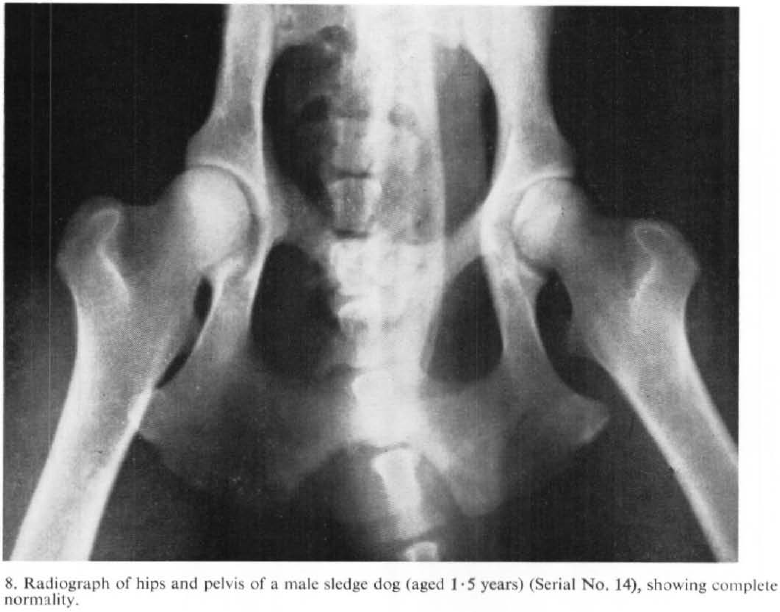| First, a bit of what they say about themselves. On their new Facebook page, they state that they are using ultrasound to evaluate the hips of 6-8 week old puppies. They say that "the EBV method is not yet able to demonstrate genetic abnormalities" and it relies "on the present hip scoring system which does not give a diagnosis of genetic information." They note that "there is NO identified gene for what is described as 'Dysplasia, a term taken from the Greek to mean "bad" or abnormal hip. It is not a full diagnosis." They point out that hip dysplasia diagnosed at 2 years old could be the result of "trauma, infection, a fluid bild up in the hip or simply over weight or over exercised none of which are genetic." Further, they claim that "X-raying dogs at full skeletal maturity for hip evaluation over the past 30+ years has not reduced the prevalence of 'Dysplasia' confirming that that this label is not fit for purpose." Finally, they point out that "too many dogs are being removed from the gene pool based on a score that does not give us a genetic diagnosis." |
| With PUPscan any hip abnormalities are identified at 6-8 weeks of age. Screening at 6-8 weeks gives us the opportunity to identify the truly genetic abnormalities. With PUPscan we can screen for hip 'Dysplasia' in 6-8 week old puppies. Our Ultrasound Imaging needs no anaesthetic and is achieved in the natural load bearing position. Congenital genetic 'Dysplasia' can be identified, thus preventing many at risk breeds being excluded from your breeding program by being labelled 'Dysplastic' although with no proven genetic abnormality. |
| With Ultrasound diagnostics, we can distinguish between congenital and acquired hip and elbow problems in young puppies. Congenital means that you are born with it, but not everything you are born with is genetic...Congenital may be acquired while in the womb or during birth for example. We can obtain a diagnostic image within two or three minutes per joint. Entering the data on to a computer system together with the measurements that represent the development of the joint takes a further five minutes. |
From a reprint of a published article (posted on the Facebook page) about them written by one of the people involved in the venture:
| With PUPscan we can screen for hip problems in six week old puppies by ultra sound imaging which will identify hip problems in vulnerable breeds, thereby helping to avoid the exclusion of many dogs from Breeding Programmes that are labelled as "Dysplastic" but may not be genetically so...Most of these puppies may actually be born with normal hips...With PUPscan, we can scan puppies at 6 weeks, which can go to their new homes with a clear certificate if no abnormality is found. |
The bottom line seems to be that PUPscan is arguing that by screening puppies at 8 weeks, they can distinguish between "genetic" dysplasia and hip abnormalities with non-genetic (i.e., environmental) causes.
On the basis of the information they provided, I submitted some basic questions to their facebook page:
- What "measurements" are taken?
- What evidence is there that whatever you are scoring is predictive of the development of hip dysplasia?
- What value is there in imaging a cartilagenous joint that is yet to be formed?
- What is the basis for your claim to be assessing "congenital genetic dysplasia"?
| No, I don't get the "simplicity" of your project, because you haven't offered any evidence that it has anything useful to offer. And you haven't answered the questions that would provide this information. Here's the issue. The hip joints of puppies at 8 weeks are cartilage. There will be no evidence of hip dysplasia, genetic or otherwise, in an 8 week puppy, or a 4 week puppy, or a 2 week puppy, or any puppy with joints made of cartilage, unless it's been tossed off the roof a few times. So you can collect your money, hand out a certificate stating that you found no evidence of hip dysplasia at 8 weeks, and that would be true. When a puppy goes on to develop dysplasia, you can then claim that it must be due to non-genetic factors, because the hips were "normal" at 8 weeks when you would have detected "genetic", "congenital" hip dysplasia. Of course, you do not assess laxity, which might have been at least nominally informative (e.g., as in a hip with broken ligament that can be subluxated). Riser would agree that it is biomechanics that results in the deformation of the hips that is manifested as hip dysplasia, but he ALSO makes it clear that genetic differences in body structure are also involved. You know, it is important that we get things like this right. There are many breeders that will use the tools we provide them and will make every effort to do what is necessary to produce healthy, happy puppies. I would love to know that you have something useful to offer them. But I don't see it, and you're not offering the information that will convince me. Why? It doesn't escape me that you call this a "Project" and not a "test" or a "diagnosis" or some other term that denotes more than an activity of some sort. I can't help but be suspicious. You will be collecting money from people, but what useful information are you offering, and what is the PROOF that it is useful? This evidence should be front and center, yet you refuse to provide it. I'm not trying to be adversarial here, but do understand that ANYBODY using your "project" should be asking these questions. Surely you have answers? While your certification that you find no evidence of hip dysplasia in the ultrasound of somebody's 8 week puppy might be true, it is, as far as I can tell, misleading and meaningless. I would argue further that you have done enough homework to know that the evaluations as described are specious and unethical. I too am disappointed that I am still unable to grasp the simplicity of your "Project". If it was so simple, I would have thought it would be easy enough to explain. Plus, I still have my list of unanswered questions, which you have been given every opportunity to address. I'm still open to evaluating any information you might submit to the contrary before I write my review. |
I did not receive additional information from PUPscan. However, they posted this response:
| Hi Carol, We in the United Kingdom find it impossible to explain why you in Califiornia are so hostile to an innovation that could improve the welfare of our dogs. Our Project compliments D.N.A analysis which is why our KC have asked us to collect samples from every puppy we scan for analyis and to include on their data base. Also where is your evidence that 50 years of hip scoring has eliminated 'Dysplasia'? |
They had also added this:
They also had this post on the Facebook page:
| "I would like to remind people that this page is not here to promote other individual businesses; It is about information that we make available to all. FREE. If anyone feels they want to attend one of our seminar they are very welcome. PUPscan will not under any circumstances accept or totorate any attempts to discredit our work that is NOT evidence based. The KC are working with us to acheive a better understanding of canine health and welbeing. This is about working co-operativly in a multidisaplinary team." |
We don't know what they are measuring. We don't know if they have any evidence that these mystery measurements tell us anything about hip dysplasia. We don't know how measurements of a structure that is cartilage in a puppy can tell us something useful about what to expect in the adult dog after it has been converted to bone. We don't know why they think they can ascribe to genetics any problems they see in their ultrasound examination.
What I find especially disturbing is the fact that they are leading people to believe that they are providing useful information and "new hope for breeders of 'dysplastic' dogs", as in the title of their published article. Unless they can provide answers to the very basic questions I have asked them, I don't see that they have anything useful to offer.
You can read the exchange I had with them here:
| pupscan_-_timeline.pdf |
PUPscan states that "the EBV method is not yet able to demonstrate genetic abnormalities". I'm not sure what they mean by this; the statement really doesn't make sense. EBVs don't (can't) "demonstrate" genetic abnormalities. They are statistical (hence "estimated") "breeding values", or predictions of the genotype of an animal based on the phenotypes (in this case, hip scores) of related dogs. The EBV score for a dog is based on the calculated heritability of the trait in that population of animals, where heritability is the amount of variation in the trait that can be accounted for by genetic differences among individuals. (For a quick review of what heritability means, check out this nice video from the Kahn Academy.) The heritability of hip dysplasia has been determined in many studies and usually ranges from about 0.15-0.45, which means that 15-45% of the variation among animals reflects variation in genotype; i.e., there is an influence of genetics on hip dysplasia. The EBV score does not "demonstrate genetic abnormalities"; it simply reflects an influence of genotype on phenotype.
Hip screening over the last 30 years has "not reduced the incidence of Dysplasia"
Certainly hip dysplasia has not been eliminated, but there is evidence that progress has been, or could be, made as a result of screening programs. The Finnish Kennel Club has documented significant improvement in hip phenotype in a number of breeds over the last three decades as a result of traditional screening programs and more recently through the use of Estimated Breeding Values. Similarly, hip evaluations of Hovawarts in Germany were dramatically improved after adoption of a breeding program based on EBVs (http://bit.ly/2l5qReo). Organizations with breeding programs for guide dogs have also had great success in reducing the incidence of hip dysplasia in the animals they produce (pers. comm.). Hip dysplasia continues to be a significant health and welfare issue in dogs, but it is not the case that no progress has been made over the last 30 years.
I have posted a followup to this in light of new information that came to my attention.
ICB's online courses
*******************
Join our Facebook Group
ICB Breeding for the Future
...the science of dog breeding
*******************
Visit our Facebook Page
ICB Institute of Canine Biology
...the latest canine news and research
